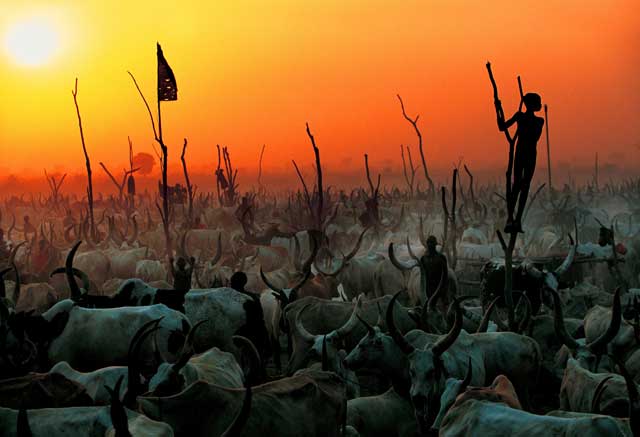Portfolio: Sudan's Dinka tribe
The sun sets on an ancient tradition

Your support helps us to tell the story
From reproductive rights to climate change to Big Tech, The Independent is on the ground when the story is developing. Whether it's investigating the financials of Elon Musk's pro-Trump PAC or producing our latest documentary, 'The A Word', which shines a light on the American women fighting for reproductive rights, we know how important it is to parse out the facts from the messaging.
At such a critical moment in US history, we need reporters on the ground. Your donation allows us to keep sending journalists to speak to both sides of the story.
The Independent is trusted by Americans across the entire political spectrum. And unlike many other quality news outlets, we choose not to lock Americans out of our reporting and analysis with paywalls. We believe quality journalism should be available to everyone, paid for by those who can afford it.
Your support makes all the difference.A herd of oxen and their magnificent curved horns, packed together in their thousands, extend as far as the eye can see, while an orange glow casts an eerie pall over the throng of beasts and their long-limbed Dinka minders.
"Reaching this remote cattle camp in southern Sudan was like walking into a different world," says Carol Beckwith, who, along with her fellow photographer Angela Fisher, has spent the past 30 years documenting the rapidly vanishing way of life of the Dinka and other indigenous tribes across Africa.
But this is no industrial cattle ranch: the Dinka have formed a unique bond with these creatures, which they believe provide a connection to their spirit world. At puberty, each male is given his namesake ox by his family, which he must care for throughout his life. It is an extraordinary level of devotion, but, as Beckworth points out, the oxen are the lifeblood of the community: "They are completely dependent on these animals. They live off their milk, they sleep on the animals' warm hide and burn their dung." What's more, they act as a form of currency: 75 oxen, for instance, serve as a suitable dowry for a bride-to-be.
But this harmonious way of life was inevitably affected by the two decades of civil war that tore apart their country until the peace treaty of 2005. "The Dinka got caught up in the strife between the Islamic north and the Christians and animists in the south," explains Beckwith – countless died during the period, while many more were displaced. But, she adds, while "the media has been full of stories about a country racked with civil war, I wanted to show people something else. The Dinka have so much to teach us about inner values and relationships, and we're in danger of losing an important part of the world's cultural heritage."
'Dinka: Legendary Cattle Keepers of Sudan' (£47.50, Rizzoli New York) is out now
Join our commenting forum
Join thought-provoking conversations, follow other Independent readers and see their replies
Comments